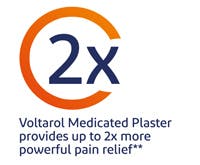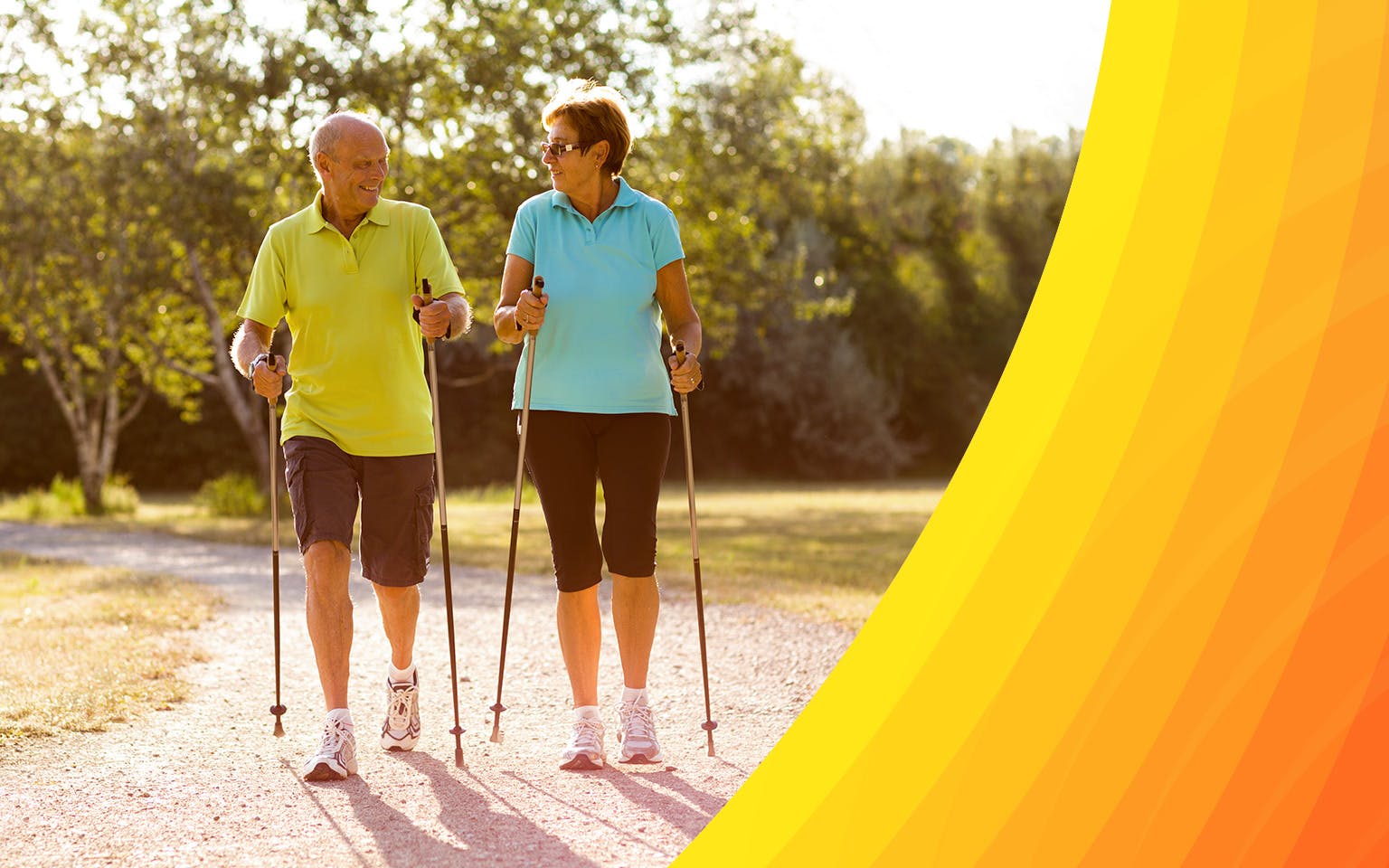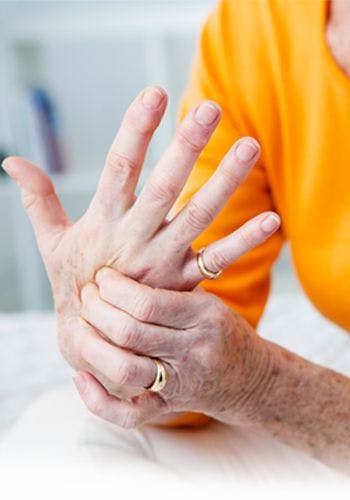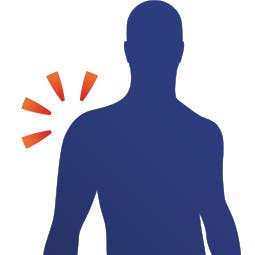If you have osteoarthritis, there are plenty of positive steps you can take to relieve your pain and prevent your condition getting worse. Just because you have osteoarthritis, it doesn’t mean you should put up with pain that limits your life – there are things that can help.¹ Take back control so you can get on with your life, your way.
Osteoarthritis treatment is about more than clinics and hospitals. Here are some ideas of how to help yourself in your everyday life. Have a chat with your doctor to make sure these will work for you and your individual needs.
Rediscover the joy of movement
If you’re in pain from osteoarthritis, exercise may be the last thing you feel like doing but it’s worth it. Doing some regular exercise will help to build up strength in your muscles, which can take the strain off your joints and protect them.³ ⁴
Regular exercise can actually improve how well you move and how far you can walk.² In fact, taking regular walks and doing some resistance-training exercise programs have been shown in studies to slow down the progression of osteoarthritis, whatever your age.² A physiotherapist can help you create an exercise program for you to follow at home or in the gym.³
Manage your weight
Your body weight can have a huge influence on your osteoarthritis. If you keep to a healthy weight, you won’t put so much stress on your joints, particularly your knees or hips.² Losing weight should not only help to relieve your symptoms but also help to slow down cartilage loss in weight-bearing joints, such as your knees.²
So if you need to lose weight, it’s important to do what you can to shed the extra pounds through a combination of healthy eating and exercise.²
Get some supportive help
It’s important to take some steps to reduce the stress on your joints. This might involve making some changes to your home, car or workplace. This can be anything from making switches, dials and plugs easier to grip if you have osteoarthritis in your hands – you could wrap elastic bands around door handles for example – to installing lever taps in your home.⁵ ⁶ In your car, you could add a padded steering wheel cover to help you grip the wheel better, and get a supportive headrest to give your neck some support. A panoramic rear-view mirror and blindspot mirrors on wing mirrors can also be a huge help if you have limited movement in your neck.⁷
Your doctor may refer you to see an occupational therapist who can give you some practical help on how to protect your joints, and information about equipment or gadgets that will make your daily life easier.¹
Help Control pain
There are plenty of pain-relieving medicines that you can buy over-the-counter from a pharmacy to help ease pain and stiffness in your joints. These include pain-relieving creams and gels that you rub directly into your joint, where it is absorbed into your skin to help relieve pain.
The active ingredient in Voltarol medicated products is a non-steroidal anti-inflammatory drug (NSAID) called diclofenac.⁸ Diclofenac works to inhibit the production of prostaglandins, substances in the body that cause pain and inflammation.⁸ Voltarol Osteoarthritis Joint Pain Relief 1.16% Gel offers clinically proven treatment to ease the pain of mild osteoarthritis in the knees or fingers.⁹ ¹⁰
Unlike other things like heat rubs that only mask the pain, or tablets that act on the whole body, Voltarol’s active ingredient penetrates your skin to the underlying tissues and joints to treat one of the root causes of pain.¹¹ ¹² The amount of the drug in your blood is far lower with medicines that you apply to your skin (topical medicines) compared with the same drug in tablet form.¹² It’s a personal choice on whether to take pills or use a gel but for osteoarthritis, it makes sense to attack the pain at source without the need to pass the active ingredient through your stomach.¹² ¹³
Healthcare professionals sometimes recommend that you top up NSAIDs with paracetamol for dual pain relief.¹
If you have tried this combined approach but still have some discomfort, your doctor may prescribe a stronger painkiller, such as NSAID tablets or opioids.¹ Other options for resistant pain include injecting a medicine such as a steroid into your joint.¹
So, with the wide range of treatment options open to you, there’s no reason to let osteoarthritis pain prevent you from living the active life you want to.
References
¹ Osteoarthritis care and management. National Institute for Health and Care Excellence (NICE). https://www.nice.org.uk/guidance/cg177, accessed May 2018
² Osteoarthritis treatment & management. Medscape. https://emedicine.medscape.com/article/330487-treatment#showall, accessed May 2018
³ Osteoarthritis. Patient.co.uk Professional Reference. https://patient.info/doctor/osteoarthritis-pro, accessed May 2018
⁴ Exercising with osteoarthritis. Arthritis Foundation. https://www.arthritis.org/living-with-arthritis/exercise/benefits/osteoarthritis-exercise.php, accessed May 2018
⁵ Tips for every room. Arthritis Research UK. https://www.arthritisresearchuk.org/arthritis-information/daily-life/comfort-in-your-home/tips-for-every-room.aspx, accessed May 2018
⁶ Choosing kitchen equipment. Arthritis Research UK. https://www.arthritisresearchuk.org/arthritis-information/daily-life/comfort-in-your-home/your-kitchen/choosing-kitchen-equipment.aspx, accessed May 2018
⁷ Buying a car. Arthritis Research UK. https://www.arthritisresearchuk.org/arthritis-information/daily-life/driving/buying-a-car.aspx, accessed May 2018
⁸ Global datasheet: Topical diclofenac. May 2018
⁹ Niethard Fu et al. Efficacy of topical diclofenac diethylamine gel in osteoarthritis of the knee J Rheumatol 2005; 32:2384–92.
¹⁰ Zacher J et al. Topisches diclofenac emulgel versus orales ibuprofen in der therapie der aktivierten arthrose der fingergelenke (heberden- und/oder bouchard-arthrose) doppelblinde, kontrollierte, randomisierte studie Akt Rheumatol 2001; 26:7–14.
¹¹ Goldolph-Zink et al. Active substance concentration in articular and periarticular tissues of the knee joint after cutaneous application of diclofenac - diethylammonium emulgel. Akt Rheumatol 1996; 21:298-304.
¹² Derry S et al. Topical nsaids for chronic musculoskeletal pain in adults. Cochrane Database of Systematic Reviews, 2016(4)doi: 10.1002/14651858.CD007400.pub3.
¹³ Altman R. et al. Advances in nsaid development: Evolution of diclofenac products using pharmaceutical technology. Drugs 2015; 75:859–77.
Explore our range
Find out how our products can help
Discover the Voltarol product range to find the right product to treat your pain.
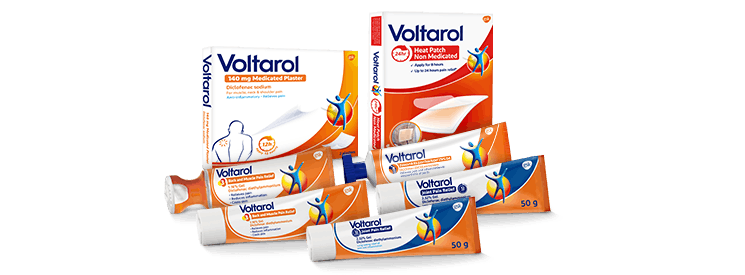
Learn more
What is pain?
Understand why our bodies experience the sensation of pain and the many causes of body pain.
read moreHow does Voltarol work?
Learn how Voltarol works to relieve pain, reduce inflammation and helps speed up recovery.
**vs non medicated placebo patch
read more